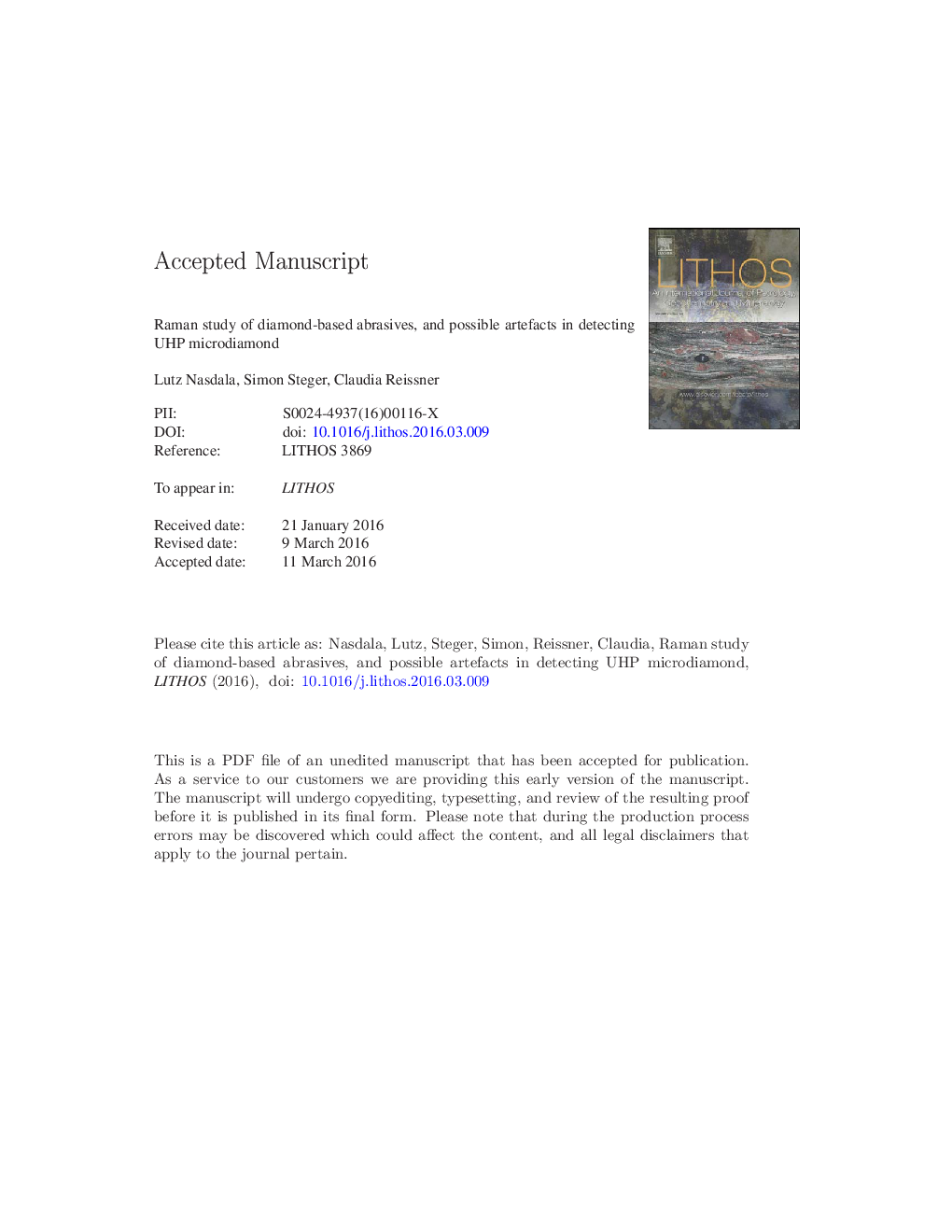| Article ID | Journal | Published Year | Pages | File Type |
|---|---|---|---|---|
| 5784321 | Lithos | 2016 | 46 Pages |
Abstract
Raman spectral characteristics of a range of diamond-based abrasives (powders and sprays) and drilling and cutting tools, originating from preparation laboratories worldwide, are presented. Some abrasives show strong broadening of the main diamond band [FWHM (full width at half band-maximum) > 5 cmâ 1] accompanied by strong band-downshift (νË = 1316-1330 cmâ 1). Others are characterised by moderate band broadening (FWHM = 1.8-5 cmâ 1) at rather regular band position (νË = 1331-1333 cmâ 1). In addition we found that a “fresh” abrasive and its used analogue may in some cases show vast differences in their Raman spectra. The Raman parameters of diamond-based abrasives overlap widely with Raman parameters of UHP (ultra-high pressure) microdiamond. It is hence impossible to assign diamond detected in a geological specimen to either an introduced artefact or a genuine UHP relict, from the Raman spectrum alone. Raman is an excellent technique for the detection of minute amounts of diamond; however it does not provide conclusive evidence for the identification of UHP microdiamond. The latter requires thorough verification, for instance by optical microscopy or, if doubts cannot be dispelled, transmission electron microscopy.
Related Topics
Physical Sciences and Engineering
Earth and Planetary Sciences
Geochemistry and Petrology
Authors
Lutz Nasdala, Simon Steger, Claudia Reissner,
